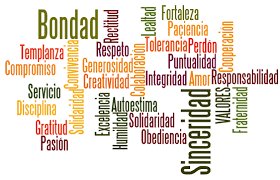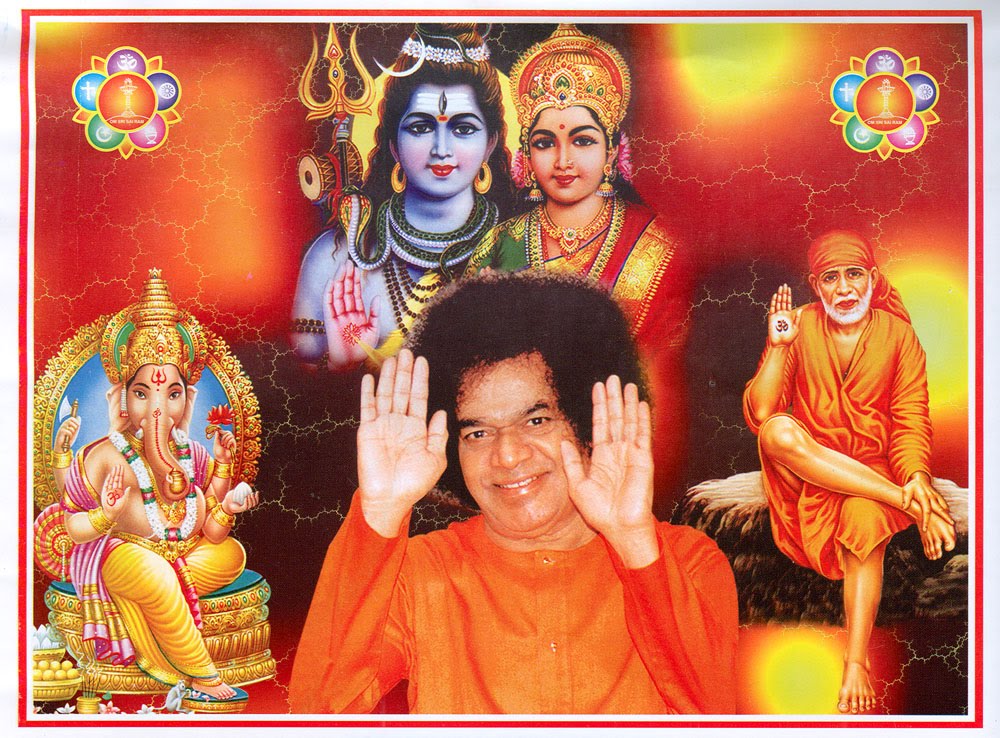- the trident that represents the three gunas
- the snakes that show he is beyond the power of death and poison and also stand for the Kundalini energy.
- the sound of Shiva's two-sided drum maintains the rhythm of the heartbeat and creates the sound AUM in the overtones.
- the vehicle of Shiva is the white bull called Nandi (the joyful).
- Shiva is often seated on a tiger skin or wears a tiger skin, with the tiger representing the mind.
- Shiva lives on Mount Kailasa in the Himalayas.
Some unique attributes of Lord Shiva
1. Physical attributes
a. Ganga : Just as the sun is the focal point of the solar system and the soul that of the body, the focal point of divine consciousness (chaitanya) in every object and pure particles (pavitrakas) is ga-aum. The flow from which ga-aum originates is gan gaha = Ganga. Ga-aum flows from Shiva's head. This is called the descent of the Ganga from Shiva's head. Since the river Ganga has a fraction of the principle of the spiritual Ganga, no matter how polluted it becomes, its purity is perpetually retained. Hence, when compared to any other water in the world, the water from the Ganga is the purest. This is realised not only by those who can perceive the subtle dimension but also by scientific researchers.
b. Moon : Shiva adorns the chandra (moon) on His forehead. The point where the three frequencies - affection (mamata), mercifulness (kshamashilata) and motherly love (vatsalya) originate is referred to as the chandra (moon). Thus, one can conclude that chandrama (the moon principle) is the state in which the three attributes of affection, mercifulness and motherly love are present.
c. Third eye : Shankar is three-eyed, i.e. He can perceive events of the past, present and future.According to the science of Yoga the third eye means the Sushumna nadi (channel).
d. Serpent : One of the Names of Lord Shankar is Bhujanga-patihari. Bhujang means a serpent or pure particles (pavitrakas), pati means the nurturer and hari means one with a garland around His neck. Bhujangapatihari thus means the One who nurtures pure particles and wears them like a garland. Various serpents represent groups of pure particles. Though externally they appear like serpents, internally they are a kind of ladder. To make spiritual progress one has to climb up holding onto the tail of the serpent. Lord Shankar adorns serpents at nine points on His body - one on the head, one around the neck, one on each arm, one on each wrist, one around the waist and one on each thigh. This implies that His body is comprised of pure particles or that serpents of pure particles play all over the body of Lord Shankar who has the universe as His form.
2. Spiritual attributes
a. One performing severe austerities and the great yogi
Shiva is always seated in a bandha or a mudra. His temperature rises due to heat generated by performing severe austerities; Hence, He uses the Ganga, the moon and serpents which endow a cooling effect and lives on the snow-clad Kailas mountain.
b. Short tempered
If someone disturbs His meditation the radiance generated by spiritual practice will be suddenly expelled and whoever is in front of Him will not be able to tolerate it, and gets destroyed. This is referred to as being 'reduced to ashes by Shankar's opening of the third eye'.
c. One who is willing to undergo any distress for the sake of imparting happiness to others
The poison generated during the churning of the celestial ocean (samudramanthan) was burning the entire Universe but no deity came forward to accept it. At that time Shiva drank that poison and saved the world from destruction.
d. One who has both, deities and demons, as His worshippers
Neither did demons like Banasur, Ravan, etc. worship Lord Vishnu nor did Lord Vishnu bestow any boon upon any demon. However, they worshipped Lord Shiva who blessed them.
e. Master of the spirits
Since Lord Shiva is the master of spirits, His worshippers are generally not possessed by them.
Science in the worship of Lord Shiva on Mahashivratri
The function of the 'Shivpindi'
1. Emitting waves of Knowledge, Devotion and renunciation
2. Emission of subtle vibrations of chaitanya, bliss and peace
3. Receiving the 'tarak or marak tatva (element)' as required
Lord Shiva

| Cremation ground: Shiva sitting in the cremation ground signifies that He is the controller of death in the physical world. | Matted locks: The three matted locks on the head of the Lord convey the idea that integration of the physical, mental and spiritual energies is the ideal of yoga. |
| Tiger skin: A tiger skin symbolizes potential energy. | The crescent moon: The crescent moon is only one of His ornaments. |
Three eyes: Lord Shiva, also called Tryambaka Deva, is depicted as having three eyes: the sun is His right eye, the moon the left eye and fire the third eye. | Nandi: The bull is associated with Shiva and said to be His vehicle. |
Kundalas (two ear rings): Two Kundalas, Alakshya and Niranjan in the ears of the Lord symbolize the Shiva and Shakti (male and female) or Ardha-Nariswara principle of creation. | Kamandalu: A water pot (Kamandalu) made from a dry pumpkin contains nectar and is shown on the ground next to Shiva signifies that, an individual must break away from attachment to the physical world and clean his inner self of egoistic desires in order to experience the bliss of the Self. |
| A snake (Vasuki Naga): The snake is shown curled three times around the neck of the Lord and is looking towards His right side. The three coils of the snake symbolize the past, present and future - time in cycles. | Rudraksha necklace: Rudra is another name of Shiva. Rudraksha necklace worn by the Lord illustrates that He uses His cosmic laws firmly - without compromise - to maintain law and order in the universe. |
| Ganga: Ganga, symbolically represented on the head of the Lord by a female (Mother Ganga) with a jet of water emanating from her mouth and falling on the ground, signifies that the Lord destroys sin, removes ignorance, and bestows knowledge, purity and peace on the devotees. | Snake around the neck: The snakes to symbolize the yogic power of Lord Shiva with which He dissolves and recreates the universe. |
| Varda Mudra: Lord Shiva's right hand is shown in a boon- bestowing and blessing pose, which annihilates evil, grants boons, bestows grace, destroys ignorance, and awakens wisdom in His devotees. | Trident (Trisula): A three-pronged trident shown adjacent to the Lord symbolizes His three fundamental powers (shakti) of will (iccha), action (kriya) and knowledge (jnana). Damaru (drum): Damaru symbolizes the two utterly dissimilar states of existence, unmanifest and manifest. |
| Half-open eyes: When the Lord opens His eyes, a new cycle of creation emerges and when He closes them, the universe dissolves for creation of the next cycle. The half-open eyes convey the idea that creation is going through cyclic process, with no beginning no end. |


 Shiva is the god of the yogis, self-controlled and celibate, while at the same time a lover of his spouse (shakti). Lord Shiva is the destroyer of the world, following Brahma the creator and Vishnu the preserver, after which Brahma again creates the world and so on. Shiva is responsible for change both in the form of death and destruction and in the positive sense of destroying the ego, the false identification with the form. This also includes the shedding of old habits and attachments.
Shiva is the god of the yogis, self-controlled and celibate, while at the same time a lover of his spouse (shakti). Lord Shiva is the destroyer of the world, following Brahma the creator and Vishnu the preserver, after which Brahma again creates the world and so on. Shiva is responsible for change both in the form of death and destruction and in the positive sense of destroying the ego, the false identification with the form. This also includes the shedding of old habits and attachments.  Another form is the Nataraj. Shiva Nataraj's dance represents both the destruction and the creation of the universe and reveals the cycles of death, birth and rebirth. His Dance of Bliss is for the welfare of the world. In the pose of Nataraj, the King of Dance is giving darshan to his beloved devotees within the "Hall of Consciousness", which is the heart of man. Under his feet, Shiva crushes the demon of ignorance called Apasmara Purusha, caused by forgetfulness. One hand is stretched across his chest and points towards the uplifted foot, indicating the release from earthly bondage of the devotee. The fire represents the final destruction of creation, but the dance of the Nataraj is also an act of creation, which arouses dormant energies and scatters the ashes of the universe in a pattern that will be the design of the ensuing creation.
Another form is the Nataraj. Shiva Nataraj's dance represents both the destruction and the creation of the universe and reveals the cycles of death, birth and rebirth. His Dance of Bliss is for the welfare of the world. In the pose of Nataraj, the King of Dance is giving darshan to his beloved devotees within the "Hall of Consciousness", which is the heart of man. Under his feet, Shiva crushes the demon of ignorance called Apasmara Purusha, caused by forgetfulness. One hand is stretched across his chest and points towards the uplifted foot, indicating the release from earthly bondage of the devotee. The fire represents the final destruction of creation, but the dance of the Nataraj is also an act of creation, which arouses dormant energies and scatters the ashes of the universe in a pattern that will be the design of the ensuing creation.  The Mahamrityunyaya form of Shiva is the great conqueror of death. The Mahamrityunjaya mantra is one of the two main mantras of the Vedas, next to the Gayatri mantra. It is chanted to remove death and disease. This form of Shiva also is the being of pure joy, referring to the unconditioned enjoyment of the perfectly peaceful mind. That is the true nature of the divine elixir that this Shiva offers his devotees in no less than four hands.
The Mahamrityunyaya form of Shiva is the great conqueror of death. The Mahamrityunjaya mantra is one of the two main mantras of the Vedas, next to the Gayatri mantra. It is chanted to remove death and disease. This form of Shiva also is the being of pure joy, referring to the unconditioned enjoyment of the perfectly peaceful mind. That is the true nature of the divine elixir that this Shiva offers his devotees in no less than four hands.  The power or energy of Shiva is Shakti, his spouse, of which Parvati is probably the most popular form. Shiva's first wife was Sati and his second wife was Parvati. They are also known by many other names, such as Uma, Gauri, Durga, Kali, Annapurna and Shakti. His sons are Ganesha and Kartikeya.
The power or energy of Shiva is Shakti, his spouse, of which Parvati is probably the most popular form. Shiva's first wife was Sati and his second wife was Parvati. They are also known by many other names, such as Uma, Gauri, Durga, Kali, Annapurna and Shakti. His sons are Ganesha and Kartikeya. The Shiva Lingam
The Shiva Lingam 





















